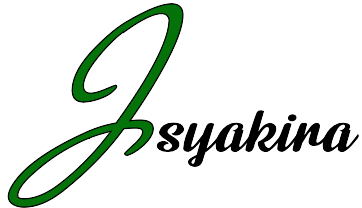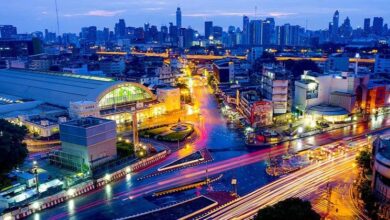Table of Contents
ToggleIn today’s digital world, images are integral to communication, design, and content creation. From social media posts to professional presentations, the use of images is indispensable. However, these images come in various formats such as PNG, GIF, TIFF, and BMP, each serving different purposes. Among these, JPEG (Joint Photographic Experts Group) stands out as one of the most popular and widely used image formats. It offers a perfect balance between image quality and file size, making it a preferred choice for many.
This article delves into the importance of image to jpeg converter, explores its benefits, highlights different conversion methods, and provides an overview of some of the best tools available for this purpose.
Why Convert Images to JPEG?
1. File Size Reduction
One of the primary reasons for converting images to JPEG format is the reduction in file size. JPEG images use lossy compression, meaning some of the image data is discarded during compression, resulting in a smaller file size. This is particularly beneficial when you need to upload images to websites, share them via email, or store them in limited digital space without sacrificing too much quality.
2. Web Optimization
JPEG images are well-suited for web use. Most websites favor JPEGs due to their fast loading times. Large image files can significantly slow down website performance, which negatively impacts user experience and SEO rankings. By converting images to JPEG, you ensure that your site loads quickly, reducing bounce rates and improving search engine visibility.
3. Widespread Compatibility
JPEG is universally supported across devices, platforms, and software. Whether you’re viewing an image on a smartphone, desktop, or tablet, or opening it in a graphic editor or word processor, JPEG files are almost always compatible. This makes JPEG an ideal format for sharing and viewing images across various media.
4. Preserving Sufficient Image Quality
While JPEG uses lossy compression, the reduction in quality is often not noticeable to the average viewer, especially when optimized correctly. For photographs and complex images, JPEG delivers excellent quality at a fraction of the file size compared to uncompressed formats like BMP or TIFF.
5. Ease of Sharing
Because of their small file size and compatibility, JPEGs are perfect for sharing images via email, social media, or messaging apps. High-resolution images in formats like TIFF can be too large to send through most sharing platforms without first converting to JPEG.
Different Image Formats and Their Limitations
Before diving into the conversion process, it’s helpful to understand why other image formats may not always be ideal for everyday use.
PNG (Portable Network Graphics): While PNG is excellent for maintaining high-quality transparency and sharpness, the file size can be significantly larger than JPEG. This makes it less ideal for web use where faster loading times are essential.
GIF (Graphics Interchange Format): GIFs are commonly used for animations but aren’t ideal for high-quality static images. Their limited color range can result in lower image quality when dealing with photographs or detailed graphics.
TIFF (Tagged Image File Format): TIFF is great for professional printing and image editing due to its lossless compression. However, the file sizes are considerably large, making them unsuitable for web use or sharing via email.
BMP (Bitmap): This older format, while still in use, produces uncompressed images, leading to large file sizes. It’s often not the best choice for modern digital environments where storage and speed are considerations.
Now that we’ve explored the reasons for converting images to JPEG, let’s look at the different methods available for image to JPEG conversion.
Methods of Image to JPEG Conversion
1. Online Converters
Online tools offer a quick and hassle-free way to convert images to JPEG without needing to install any software. These tools are especially useful when you’re on the go or working on a device that doesn’t have image editing software.
Pros:
No installation required.
User-friendly interface.
Accessible from any device with an internet connection.
Cons:
Internet-dependent.
Upload size limitations.
May not support batch processing (converting multiple files at once).
Some popular online converters include:
Convertio: This tool supports a wide range of image formats for conversion to JPEG, including PNG, GIF, TIFF, and more. It also allows batch conversion and provides an option for basic image editing.
Zamzar: Known for its simplicity, Zamzar allows users to drag and drop images for instant conversion to JPEG. You can also input a URL to convert images directly from the web.
Online-Convert: Offers advanced options for controlling image quality, resizing, and enhancing images while converting them to JPEG.
2. Desktop Software
For more advanced conversion needs, especially for professional use, desktop software is a better choice. These programs offer more control over the conversion process, such as the ability to adjust compression levels, image quality, and other settings.
Pros:
Offers batch conversion for large image collections.
Works offline.
Provides more control over compression and image quality.
Cons:
Requires installation.
Some software may be expensive.
Popular desktop software for image to JPEG conversion includes:
Adobe Photoshop: As a robust image editing tool, Photoshop offers complete control over the image conversion process. You can adjust the compression level, resize the image, and enhance it during the conversion.
GIMP: An open-source alternative to Photoshop, GIMP provides powerful tools for image conversion and editing. It supports a wide range of formats and allows users to customize their JPEG conversions.
IrfanView: A lightweight yet powerful image viewer and converter, IrfanView allows batch conversion and resizing. It supports numerous formats and offers a user-friendly interface.
3. Mobile Apps
With the increasing use of smartphones for photography, mobile apps for image conversion have become more prevalent. These apps allow users to convert images on their phones with ease.
Pros:
Convenience of use on mobile devices.
Quick conversion on the go.
No need for a computer.
Cons:
Limited editing features compared to desktop software.
May require in-app purchases for advanced features.
Popular mobile apps include:
JPEG Converter (Android): This app converts images from PNG, BMP, and other formats to JPEG and allows you to adjust compression levels.
JPEG-PNG Image File Converter (iOS): A simple and effective tool for converting images between JPEG and PNG formats on your iPhone or iPad.
4. Command-Line Tools
For tech-savvy users and developers, command-line tools offer a fast and efficient way to convert images, particularly for automating bulk conversions.
Pros:
Fast and efficient for batch processing.
Ideal for integration into scripts and automated workflows.
Cons:
Steeper learning curve for non-developers.
Limited GUI (Graphical User Interface).
Popular command-line tools include:
ImageMagick: A powerful command-line tool for image manipulation, ImageMagick can convert images between many formats, including JPEG. It also provides various image editing options such as resizing, cropping, and compression.
FFmpeg: Although primarily used for video conversion, FFmpeg also supports image conversion and allows users to convert PNG, BMP, and other image formats to JPEG.
Best Practices for Converting Images to JPEG
While JPEG conversion is a straightforward process, there are some best practices to keep in mind to ensure the best results:
1. Balance Between Quality and File Size
JPEG offers various levels of compression, and the degree of compression affects both the file size and image quality. When converting images, aim for a balance between the smallest file size and acceptable image quality. Excessive compression may result in visible artifacts (distorted areas in the image).
2. Optimize for the Web
If you’re converting images for web use, it’s a good idea to resize the image to the required dimensions before conversion. Larger images may slow down your website’s load time even if they’re in JPEG format.
3. Avoid Repeated Conversion
Every time you save an image in JPEG format, it undergoes lossy compression. Repeated conversions can degrade the image quality over time. It’s recommended to keep an original, high-quality version in a lossless format like PNG or TIFF, and only convert it to JPEG when necessary.
4. Batch Conversion for Efficiency
If you’re dealing with a large number of images, consider using tools that support batch conversion. This will save you time and ensure consistency across all the images.
Conclusion
Converting images to JPEG offers numerous advantages, from reducing file size to improving web performance and maintaining compatibility across platforms. Whether you’re a casual user looking to share images on social media or a professional dealing with high volumes of image files, there’s a conversion method suited to your needs.
Online converters provide a quick and accessible solution, while desktop software and command-line tools offer more control and customization for professional use. Mobile apps offer convenience for on-the-go conversions, while automated tools like ImageMagick are perfect for those looking to convert images in bulk efficiently.





